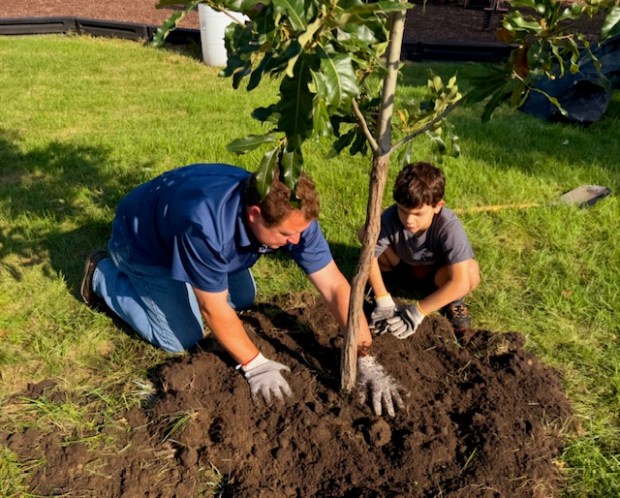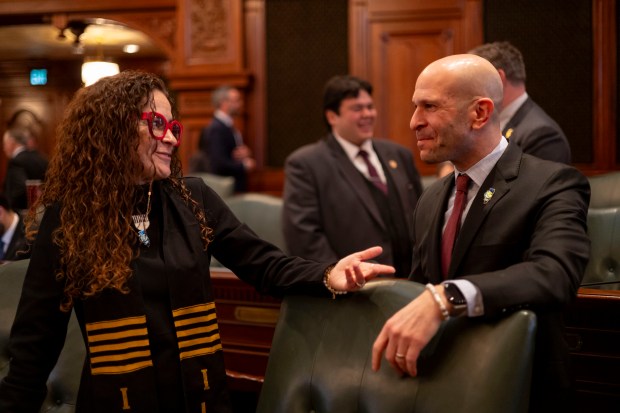Blue Island was awarded a $150,000 grant to improve the city’s tree canopy, which will be used to prune and remove trees that pose a public safety risk during storms, officials said.
The city, recognized as a Tree City by the Arbor Day Foundation, was one of 17 government entities to receive grant funding through the Morton Arboretum’s Chicago Region Trees Initiative, according to a news release from the mayor’s office.
“The current tree canopy has been neglected and proper maintenance has not been performed,” Mayor Fred Bilotto said in a statement. “This has resulted in unhealthy trees and branches that threaten public safety during storms. The grant will help the City address these issues and bring the tree canopy back to a healthy condition which will allow the city to implement a cycled pruning program in force.”
The city contracted Alsip-based Smitty’s Tree Service to prune 450 trees and remove 266 trees deemed hazardous by the city’s forestry maintenance plan, the release states. The grant will also be used to provide arbor care training to Blue Island’s Public Works staff scheduled in February.
Val Kehoe, chair of Blue Island’s Forestry Board, said trees are considered hazardous if they have diseased wood, previous storm damage, low-hanging branches that could damage infrastructure or heavy limbs that haven’t been pruned and could pose a risk during a storm.
Work pruning and removing trees began in the fall and is expected to be finished in early Spring 2025, officials said.
Funds were awarded for 22 urban forestry projects in priority Illinois communities that received a share of nearly $6.9 million in federal Inflation Reduction Act funds through the U.S. Department of Agriculture Forest Service.
The funding is overseen by the Illinois Department of Natural Resources, according to a news release from the Morton Arboretum. The grants were administered by the arboretum’s Chicago Region Trees Initiative.
The four-year grants are available to communities that meet federal requirements as disadvantaged, according to city officials.
The project will complete the enhancement of a city ordinance establishing guidelines for caring for newly planted trees.
The ordinance was updated in 2023 to enforce proper care of publicly owned trees, she said. It also makes it illegal to remove trees from public parkways without a permit, with fines of up to $750.
“As the trees mature, we now are able to have our public works make a good cut on on our trees as well as this grant is allowing us to remove trees that our public works cannot maintain, like maybe over wires or maybe just too large of a limb,” Kehoe said.
The goal is to ensure the tree canopy is properly maintained even after the funding has ended, Kehoe said.
“Our public works department will be able to implement a cycle pruning program where they will section different areas of our city and make sure that trees are being properly pruned prior to storm damage,” she said.
Kehoe said efforts to improve Blue Island’s tree canopy began around 2018 when she, along with two aldermen, started a grassroots initiative to plant 10 trees in each of the city’s seven wards.
“Our public works department was just trying to manage the fallen limbs, the risk assessment was getting high with some of the storm damages and larger limbs that were falling off of our are mature and decaying tree canopy and and there was no replanting happening in Blue Island,” she said.
The city has 22% tree canopy coverage, which is lower than that of several neighboring communities, including Robbins, Riverdale, Midlothian and Dixmoor, according to Blue Island’s urban forestry summary. The reports shows Blue Island’s canopy cover has decreased over the years due to the loss of trees in areas used for transportation and residential development.
The city’s age, one of the oldest in Cook County, has contributed to the decline in its tree canopy, as the trees have aged and begun to thin out, Kehoe said. Insect infestations and diseases further weakened the already aging tree population, and new trees were not being planted, she said.
Kehoe said this was partly due to the city’s lack of a stable forestry board for many years, which would only be reinstated during times of disease or pest infestations, only to be dismantled again during budget cuts.
But in recent years, Kehoe said city officials have made strides to work with the forestry board to improve the city’s tree canopy, and plant more than 400 trees in public spaces.
Kehoe believes securing the grant will help sustain the board’s efforts to improve the tree canopy, even if there is a change in administration.
“People have seen some difference, or are starting to see the difference of these tree plantings and having the city behind it, I do think it has provided Blue Island with a stronger sense of place for our neighborhood and and will have an economic impact in our future,” she said.
smoilanen@chicagotribune.com





